
Commercial building occupancy limits are the maximum number of people who can occupy a commercial building at any given time. These limits are set by local building codes and regulations to ensure the safety of occupants in case of an emergency such as a fire or earthquake. The occupancy limit is determined by the size of the building, its intended use, and the number of exits available.
Types of Commercial Buildings

There are several types of commercial buildings, including office buildings, retail stores, restaurants, hotels, and hospitals. Each type of building has its own occupancy limit based on its size and intended use. For example, a small retail store may have an occupancy limit of 50 people, while a large hotel may have an occupancy limit of 1,000 people.
Calculating Occupancy Limits

The occupancy limit for a commercial building is calculated based on the square footage of the building, the type of occupancy, and the number of exits available. The International Building Code (IBC) provides guidelines for calculating occupancy limits for different types of buildings. The IBC also requires that the occupancy limit be posted in a visible location in the building.
Occupancy Categories

The IBC divides commercial buildings into different occupancy categories based on their intended use. The categories include assembly, business, educational, factory, institutional, mercantile, residential, and storage. Each category has its own occupancy limit based on the size of the building and the number of exits available.
Factors Affecting Occupancy Limits

Several factors can affect the occupancy limit of a commercial building. These include the number of exits, the width of the exits, the type of construction, the location of the building, and the availability of fire protection systems. Buildings with more exits, wider exits, and better fire protection systems may have higher occupancy limits than buildings without these features.
Occupancy Load Factors
Occupancy load factors are used to determine the maximum number of people who can occupy a specific area of a building. The load factor is based on the type of occupancy and the intended use of the space. For example, a restaurant may have a higher occupancy load factor for its dining room than for its kitchen or storage area.
Importance of Occupancy Limits
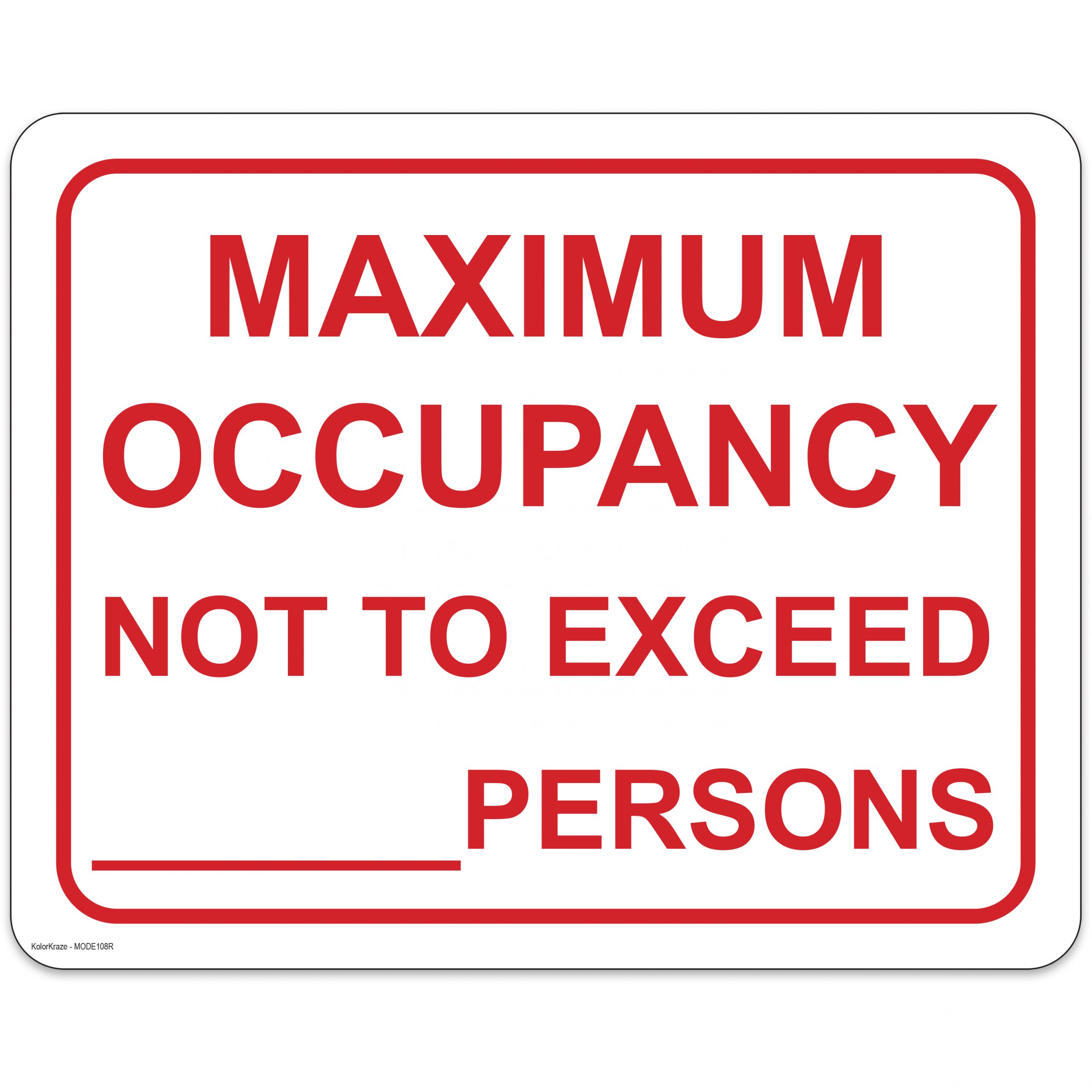
Occupancy limits are important for the safety of building occupants in case of an emergency. If a building is overcrowded, it may be difficult for occupants to evacuate quickly and safely in case of a fire or other emergency. By enforcing occupancy limits, building owners and managers can ensure the safety of their occupants and avoid potential legal and financial liabilities.
Enforcing Occupancy Limits
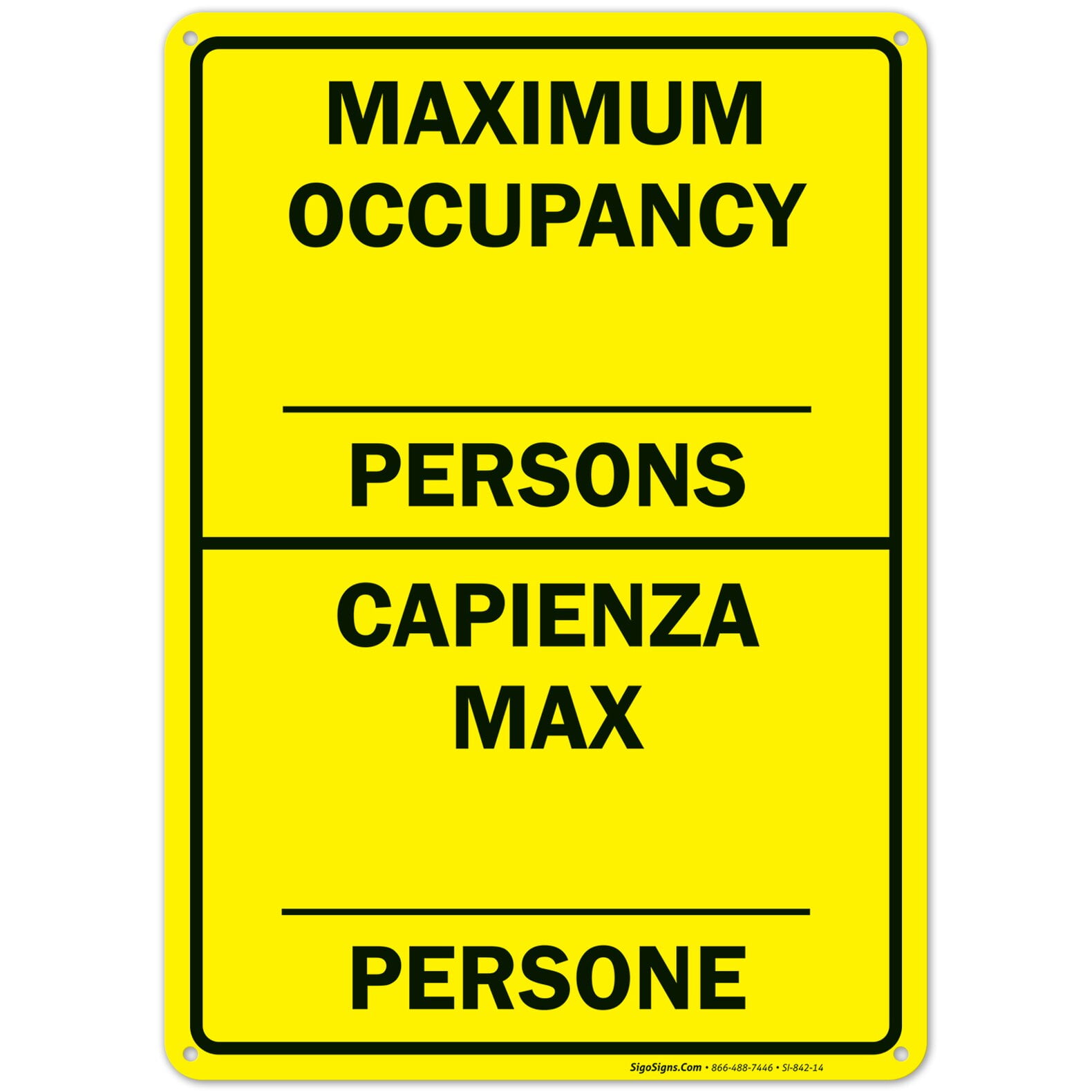
Enforcing occupancy limits is the responsibility of building owners and managers. They must ensure that the occupancy limit is posted in a visible location in the building and that the building is not overcrowded. If the occupancy limit is exceeded, the building owner or manager may be subject to fines or legal action.
Consequences of Ignoring Occupancy Limits

Ignoring occupancy limits can have serious consequences for building owners and managers. In addition to fines and legal action, they may be held liable for any injuries or deaths that occur as a result of overcrowding. Building owners and managers should take occupancy limits seriously and ensure that they are enforced at all times.
Conclusion
Commercial building occupancy limits are an important safety measure that should not be ignored. Building owners and managers should be aware of the occupancy limit for their building and ensure that it is not exceeded. By enforcing occupancy limits, they can protect the safety of their occupants and avoid potential legal and financial liabilities.
Related video of Commercial Building Occupancy Limits

Calvin and Hobbes is a beloved comic strip that has been entertaining readers for decades. The story of a mischievous boy and his best friend, a stuffed tiger that comes to life, has captured the hearts of fans all over the world. If you're a fan of Calvin and Hobbes, you might be wondering what other comics are out there that are similar to this classic strip. In this article, we'll take a look at some of the best comics that are similar to Calvin and Hobbes.
Peanuts

Peanuts is a classic comic strip that was created by Charles M. Schulz. The strip follows the adventures of Charlie Brown, Snoopy, and the rest of the Peanuts gang. Like Calvin and Hobbes, Peanuts is known for its humor, wit, and heartwarming moments. It's a great comic for readers of all ages, and it's definitely worth checking out if you're a fan of Calvin and Hobbes.
Bone

Bone is a comic book series that was created by Jeff Smith. The series follows the adventures of the Bone cousins, Fone Bone, Phoney Bone, and Smiley Bone, as they try to find their way back home. Like Calvin and Hobbes, Bone is known for its humor, its heartwarming moments, and its memorable characters. It's a great comic for readers of all ages, and it's definitely worth checking out if you're a fan of Calvin and Hobbes.
Cul de Sac

Cul de Sac is a comic strip that was created by Richard Thompson. The strip follows the adventures of Alice Otterloop, a young girl with a big imagination. Like Calvin and Hobbes, Cul de Sac is known for its humor, its wit, and its heartwarming moments. It's a great comic for readers of all ages, and it's definitely worth checking out if you're a fan of Calvin and Hobbes.
Garfield

Garfield is a comic strip that was created by Jim Davis. The strip follows the adventures of Garfield, a lazy, lasagna-loving cat, and his owner, Jon Arbuckle. Like Calvin and Hobbes, Garfield is known for its humor, its wit, and its memorable characters. It's a great comic for readers of all ages, and it's definitely worth checking out if you're a fan of Calvin and Hobbes.
Zits

Zits is a comic strip that was created by Jim Borgman and Jerry Scott. The strip follows the adventures of Jeremy Duncan, a teenage boy, and his family. Like Calvin and Hobbes, Zits is known for its humor, its wit, and its memorable characters. It's a great comic for readers of all ages, and it's definitely worth checking out if you're a fan of Calvin and Hobbes.
Frazz
Frazz is a comic strip that was created by Jef Mallett. The strip follows the adventures of Frazz, a school janitor and Renaissance man. Like Calvin and Hobbes, Frazz is known for its humor, its wit, and its memorable characters. It's a great comic for readers of all ages, and it's definitely worth checking out if you're a fan of Calvin and Hobbes.
Conclusion
If you're a fan of Calvin and Hobbes, you'll be happy to know that there are plenty of other comics out there that are similar to this beloved strip. From Peanuts to Frazz, there's something for everyone. So why not check out some of these great comics today?
Related video of Comics Similar To Calvin And Hobbes

Introduction
Learning a new language can be both exciting and overwhelming. French is a popular language spoken by millions of people around the world. It is considered one of the most beautiful and romantic languages, making it a popular choice for those who want to learn a new language. In this article, we will guide you through the basics of the French language, specifically how to say "come here" in French.Understanding the Basics of French
French is a Romance language that originated in France. It is the official language of 29 countries and is spoken by over 220 million people worldwide. The French language is known for its complex grammar rules, unique pronunciation, and its use of accents.How to Say "Come Here" in French
The phrase "come here" in French is "Viens ici." It is pronounced as "vee-ehn ees-ee." The phrase is commonly used when calling someone or when you want someone to come closer to you.Other Phrases to Use Instead of "Come Here"
If you want to use a different phrase to call someone over, here are some other phrases you can use:- "Approche" - pronounced as "ah-prosh," which means "come closer."- "Viens voir" - pronounced as "vee-ehn vwahr," which means "come see."Common French Phrases for Beginners
If you are just starting to learn French, here are some common phrases that you should know:- "Bonjour" - pronounced as "bohn-zhoor," which means "hello" or "good day."- "Comment ça va?" - pronounced as "koh-mohn sah vah," which means "how are you?"- "Je m'appelle" - pronounced as "zhuh mah-pell," which means "my name is."- "Merci" - pronounced as "mehr-see," which means "thank you."- "Au revoir" - pronounced as "oh rev-wahr," which means "goodbye."How to Learn French
There are many ways to learn French, including taking classes, using language learning apps, watching French movies or TV shows, and practicing with a native speaker. It is important to practice regularly and to immerse yourself in the language as much as possible.Conclusion
Learning French can be a fun and rewarding experience. Whether you are planning to travel to a French-speaking country or simply want to expand your language skills, knowing how to say "come here" in French is a great place to start. With practice and dedication, you can become fluent in French and communicate with millions of people around the world.Related video of Come Here in French: A Comprehensive Guide for Beginners
India is a country that is known for its diverse culture, traditions, and languages. With such a rich history, it's no wonder that there are variations in the way certain words are spelled and pronounced. One such area that has been the subject of debate is the spelling of colors.
The British Influence

India was ruled by the British for over 200 years, and during that time, the English language was introduced as the official language of the country. This led to the adoption of British spelling conventions, including the spelling of colors.
For example, the British spelling of "colour" was adopted in India, and it is still widely used today.
Regional Variations
Despite the widespread use of British spelling conventions, there are regional variations in the way certain colors are spelled in India. In some parts of the country, traditional spellings are still used.
For example, in the Hindi language, the color green is spelled "hara" instead of "green." Similarly, the color yellow is spelled "peela" instead of "yellow."
The Impact on Education

The spelling of colors may seem like a minor issue, but it can have a significant impact on education in India. With so many variations in spelling, it can be challenging for students to learn and memorize the correct spellings of colors.
Additionally, the use of traditional spellings can create confusion when students are learning English as a second language. They may learn one spelling in their native language, only to find that it is spelled differently in English.
The Future of Color Spelling in India

The spelling of colors in India is likely to continue to evolve over time. As more people become educated and fluent in English, there may be a shift towards using more standardized spellings.
However, it's important to remember that language is constantly changing, and there will always be variations based on geography, culture, and tradition.
Conclusion
The spelling of colors in India is a fascinating topic that highlights the complexity of language and culture. While there may be variations in spelling, it's important to remember that all variations are valid and deserving of respect.
As India continues to grow and develop, it will be interesting to see how the spelling of colors evolves alongside it.
Related video of Colour Spelling In India
When it comes to creating the color magenta, many people often wonder what colors they need to mix together to achieve the desired result. In this article, we will explore the colors that can be combined to create magenta and how to mix them properly.
Understanding Magenta
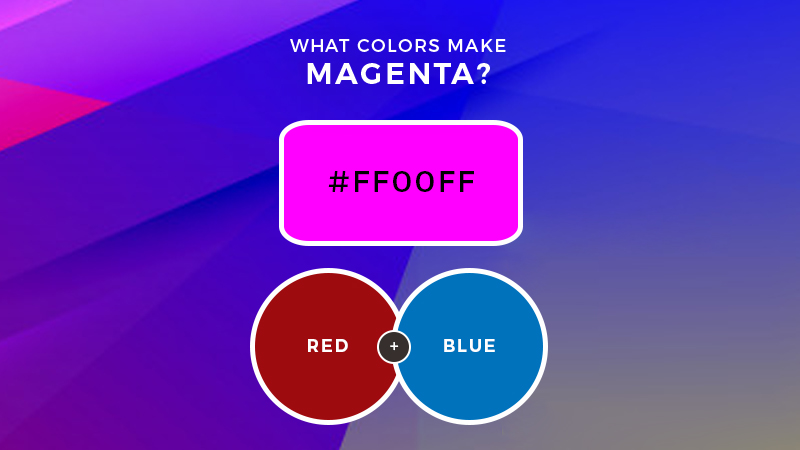
Magenta is a vibrant and bold color that is often used in art and design. It is a combination of red and blue hues, and it falls between the two colors on the visible spectrum. Magenta is a primary color, which means that it cannot be created by mixing other colors together.
How to Mix Magenta

While magenta cannot be created by mixing other colors, it can be made by combining specific colors together. The most common way to create magenta is to mix equal amounts of red and blue paint. This combination will create a deep pinkish-purple hue that is similar to magenta.
Another way to create magenta is to mix pink and purple hues together. This combination will create a softer and more subdued version of magenta. To achieve this color, mix equal parts of pink and purple paint together until you reach the desired hue.
Creating Different Shades of Magenta

Magenta can be created in a variety of shades by adjusting the amount of red and blue paint used in the mixture. To create a lighter shade of magenta, add more white paint to the mixture. To create a darker shade of magenta, add more red and blue paint to the mixture.
Another way to create different shades of magenta is to mix it with other colors. For example, adding yellow paint to magenta will create a peachy-pink hue, while adding green paint will create a more earthy tone.
Magenta in Design and Art

Magenta is a popular color in design and art due to its bold and vibrant nature. It is often used in branding and advertising to convey a sense of energy and excitement. In art, magenta can be used as a primary or accent color to add depth and contrast to a piece.
Conclusion
Magenta is a beautiful and versatile color that can be created by mixing red and blue hues together. It can be used in a variety of ways in art and design, and it can be adjusted to create a range of different shades. Whether you are a professional artist or simply looking to add some color to your home, magenta is a great choice.
Related video of Colors To Make Magenta

The Cold War was a political and military conflict between the Western powers, led by the United States, and the Eastern powers, led by the Soviet Union. It is considered one of the most significant events of the 20th century, with far-reaching consequences that continue to shape the world today. But when did the Cold War start? In this article, we will explore the origins of the Cold War, including the events that led up to it and the key players involved.
The Origins of the Cold War

The Cold War did not begin suddenly; rather, it was the result of a series of events that unfolded over several years. In the aftermath of World War II, the United States and the Soviet Union emerged as the two dominant superpowers in the world. However, their ideologies were vastly different: the United States was a capitalist democracy, while the Soviet Union was a communist state.
The first major event that contributed to the Cold War was the Yalta Conference of February 1945. This conference was held between the leaders of the United States, the Soviet Union, and the United Kingdom to discuss the post-war reorganization of Europe. While the conference was initially seen as a success, tensions began to rise when it became clear that the Soviet Union had no intention of living up to its promises.
The second major event that contributed to the Cold War was the Truman Doctrine of March 1947. This doctrine was announced by President Harry S. Truman and stated that the United States would provide military and economic assistance to any country threatened by communism. The Soviet Union saw this as a direct threat to its influence in Eastern Europe.
The Key Players
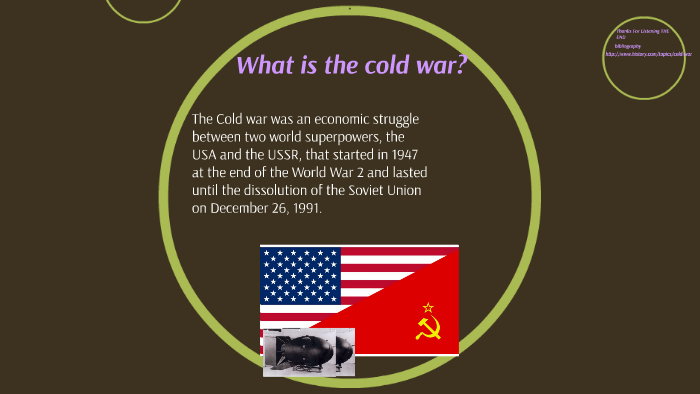
The Cold War was a complex conflict involving many key players from both the Western and Eastern powers. Some of the most significant players included:
- Joseph Stalin: The leader of the Soviet Union from 1922 until his death in 1953.
- Harry S. Truman: The President of the United States from 1945 to 1953.
- Winston Churchill: The Prime Minister of the United Kingdom from 1940 to 1945 and again from 1951 to 1955.
- Dwight D. Eisenhower: The President of the United States from 1953 to 1961.
- Nikita Khrushchev: The leader of the Soviet Union from 1953 to 1964.
The Cold War Heats Up

Throughout the 1950s and 1960s, the Cold War continued to escalate. Both the United States and the Soviet Union engaged in a nuclear arms race, with each country trying to outdo the other in terms of military might. This led to a series of proxy wars, where the two superpowers supported opposing sides in conflicts around the world.
One of the most significant events of the Cold War was the Cuban Missile Crisis of October 1962. This crisis was sparked when the Soviet Union began installing nuclear missiles in Cuba, just 90 miles from the United States. President John F. Kennedy responded by imposing a naval blockade around Cuba and demanding that the missiles be removed. After several tense days of negotiations, the Soviet Union agreed to remove the missiles in exchange for a promise from the United States not to invade Cuba and to remove its own missiles from Turkey.
The End of the Cold War
The Cold War officially came to an end in 1991, with the collapse of the Soviet Union. This was the result of a number of factors, including economic struggles, political unrest, and the rise of democracy movements in the Eastern bloc countries. The fall of the Berlin Wall in 1989 was a symbolic moment that marked the end of the Cold War era.
Conclusion
The Cold War was a complex conflict that lasted for several decades and had far-reaching consequences for the world. While it officially ended in 1991, its legacy continues to shape international relations to this day. By understanding the origins of the Cold War, the key players involved, and the events that led to its escalation, we can gain a deeper appreciation for this important period in history.
Related video of Cold War: When Did It Start?
The Cold War was a period of tension and conflict between the United States and the Soviet Union that lasted from the end of World War II until the early 1990s. It was marked by an arms race, intense propaganda, proxy wars, and a constant fear of nuclear annihilation. The Cold War had a profound impact on the world, shaping international relations and influencing politics, culture, and society in many ways.
The Causes of the Cold War
There were many factors that contributed to the start of the Cold War. The most significant of these was the ideological differences between the two superpowers. The United States was a capitalist democracy, while the Soviet Union was a communist state. This fundamental difference in political systems created an atmosphere of mistrust and hostility.
Other factors that contributed to the Cold War included the Soviet Union's desire for security, the United States' desire to spread democracy, and the arms race that developed as both sides sought to gain the upper hand in the event of a conflict.
The Impact of the Cold War

The Cold War had a profound impact on the world, shaping international relations and influencing politics, culture, and society in many ways. One of the most significant impacts of the Cold War was the arms race, which led to the development of new technologies and weapons.
The Cold War also had a significant impact on politics and international relations. The United States and the Soviet Union engaged in a constant battle for influence, seeking to spread their ideologies and gain allies around the world. This led to the development of a number of proxy wars, as each side sought to support friendly governments and undermine those that were aligned with their opponent.
The End of the Cold War

The Cold War came to an end in the early 1990s, as a result of a number of factors. One of the most significant of these was the collapse of the Soviet Union, which had been struggling economically and politically for many years. The fall of the Berlin Wall in 1989 was a symbolic moment that marked the end of the Cold War.
Other factors that contributed to the end of the Cold War included the rise of Mikhail Gorbachev in the Soviet Union, who implemented a number of reforms that helped to ease tensions between the two superpowers, and the growing influence of the United States as a superpower.
The Legacy of the Cold War
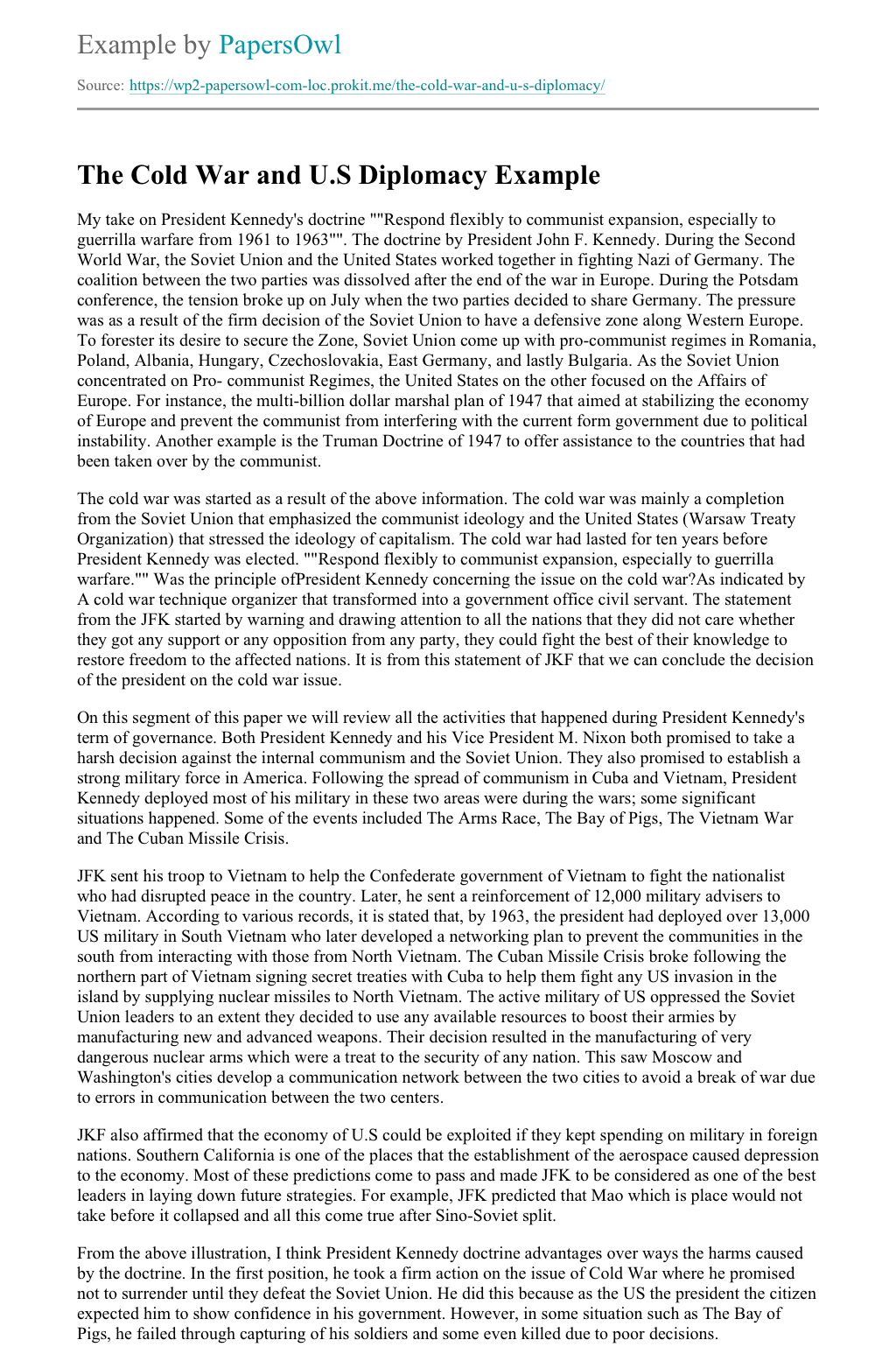
The legacy of the Cold War is still felt today, in many different ways. One of the most significant legacies of the Cold War is the ongoing arms race, which has continued to this day. Both the United States and Russia continue to develop new weapons and technologies, and there is still a great deal of tension between the two superpowers.
The Cold War also had a significant impact on international relations, and many of the issues that were at the heart of the conflict are still relevant today. For example, the ongoing tensions between the United States and North Korea are a direct result of the Cold War, as North Korea was aligned with the Soviet Union during the conflict.
Cold War Essay Conclusion
In conclusion, the Cold War was a period of tension and conflict between the United States and the Soviet Union that had a profound impact on the world. The causes of the Cold War were many, but the ideological differences between the two superpowers were the most significant. The Cold War had a significant impact on international relations, politics, culture, and society, and its legacy is still felt today.
Meta Description: The Cold War was a period of tension and conflict between the United States and the Soviet Union that lasted from the end of World War II until the early 1990s. Read on to learn more about the causes, impact, and legacy of the Cold War.
Meta Keywords: Cold War, United States, Soviet Union, arms race, international relations, politics, culture, society, nuclear annihilation, proxy wars, ideological differences, collapse of the Soviet Union, Mikhail Gorbachev, arms race, ongoing tensions.
Related video of Cold War Essay Conclusion

Nothing beats the refreshing feeling of a cold can of Coke or Diet Coke on a hot summer day. But have you ever tried adding it to water? If not, you're missing out on a whole new level of refreshment. In this article, we'll explore the benefits of mixing Coke and Diet Coke with water and how it can be the ultimate thirst-quencher.
What Happens When You Mix Coke or Diet Coke with Water?

When you mix Coke or Diet Coke with water, the carbonation and flavor mix together to create a unique taste. The carbonation creates a fizz that feels refreshing on your tongue, while the flavor adds a burst of sweetness to the mix. The water also dilutes the soda, making it less intense and more drinkable.
Why Mix Coke or Diet Coke with Water?
There are several reasons why you might want to mix Coke or Diet Coke with water. Firstly, it can be a healthier alternative to drinking the soda by itself. By diluting it with water, you are reducing the amount of sugar and calories you consume, making it a more sensible option.
Secondly, mixing Coke or Diet Coke with water can make it more refreshing. The water adds hydration to the mix, which can be especially important on hot days when you need to stay hydrated.
Lastly, mixing Coke or Diet Coke with water can be a way to change up the usual taste. If you're tired of drinking the soda by itself, adding water can create a new flavor that you might enjoy.
How to Mix Coke or Diet Coke with Water?

It's easy to mix Coke or Diet Coke with water. Simply fill a glass with ice and add equal parts of soda and water. You can adjust the ratio to your liking, depending on how strong or weak you want the flavor to be. Stir the mix together and enjoy!
You can also mix the soda with sparkling or flavored water for an added twist. Some people even add lemon or lime slices to their mix to make it even more refreshing.
Conclusion
Mixing Coke or Diet Coke with water can be a great way to enjoy a refreshing drink without consuming too much sugar or calories. It's easy to do and can be adjusted to your personal taste. So next time you reach for a can of soda, consider adding some water to make it the ultimate thirst-quencher.
Related video of Coke and Diet Coke in Water: The Ultimate Refreshment
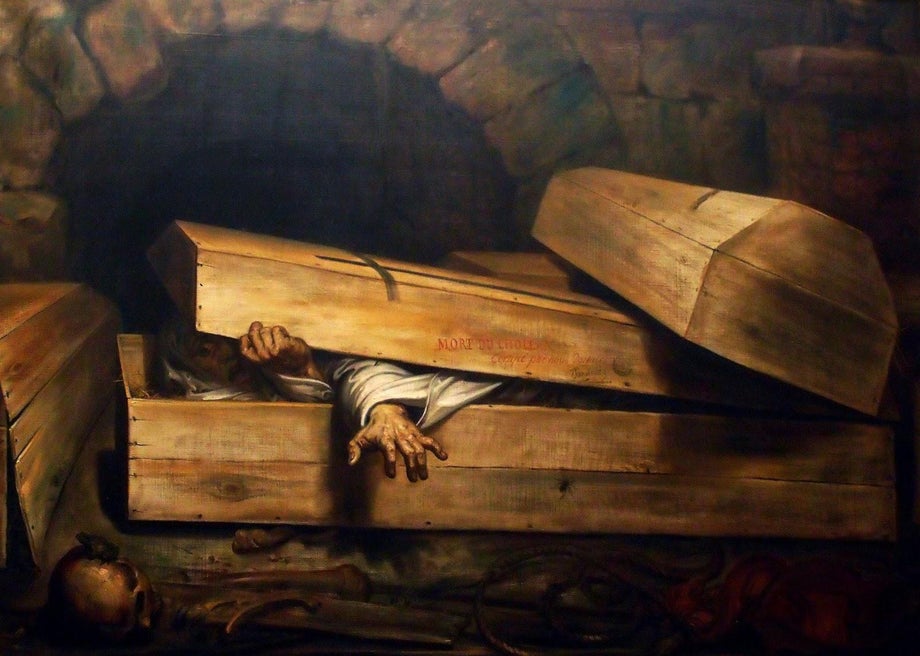
Introduction
Coffins have been used for centuries to bury the dead, but what happens when the coffin itself becomes a mystery? Coffins with scratch marks have been found in various places around the world, leaving people wondering what could have caused them. In this article, we will explore the phenomenon of coffins with scratch marks and try to unravel the mystery behind them.What are Coffins with Scratch Marks?
Coffins with scratch marks are coffins that have been found with scratches or marks on the inside. These marks can range from light scratches to deep gouges, and they can be found on the sides, bottom, and even the lid of the coffin.Theories
There are several theories as to what could have caused these scratch marks. One theory is that the person buried in the coffin was not actually dead and woke up inside the coffin, causing them to scratch and claw at the inside in an attempt to escape. Another theory is that animals, such as rats or mice, got into the coffin after it was buried and scratched at the inside in an attempt to get out. Yet another theory is that the coffin was not properly sealed, and the scratches were caused by dirt and debris that got inside and rubbed against the wood.Real-Life Examples
Coffins with scratch marks have been found in various places around the world. One famous example is the Poe Toaster, who would visit the grave of Edgar Allan Poe every year on his birthday and leave a bottle of cognac and three red roses. In 2006, a coffin with scratch marks was found at the grave site, leading some to speculate that the Poe Toaster was actually Poe himself, trying to escape from his grave.Another example is the discovery of a coffin with scratch marks in the cemetery of the Abington Presbyterian Church in Pennsylvania. The coffin was found during renovations and had scratch marks on the inside, leading to speculation about what could have caused them.The Mystery Continues
Despite the various theories and real-life examples, the mystery of coffins with scratch marks continues to baffle and intrigue people. While some may dismiss it as superstition or coincidence, others believe that there is a deeper meaning behind the scratches and marks.Conclusion
Coffins with scratch marks are a fascinating and mysterious phenomenon that has been around for centuries. While there are various theories as to what could have caused them, the truth may never be known. Regardless, they serve as a reminder of the fragility of life and the mysteries that still exist in the world.Related video of Coffin With Scratch Marks
If you're a coffee drinker, you may have experienced the phenomenon of needing to use the bathroom shortly after your first cup of the day. It's a common joke among coffee lovers that "coffee makes me poop," but is there any truth to this claim? Let's take a closer look.
The Science Behind Coffee and Digestion

Caffeine is a natural stimulant that can increase activity in the digestive system. When you drink coffee, the caffeine gets absorbed into your bloodstream and travels to your colon, where it can cause contractions in the muscles that push waste out of your body.
Coffee also stimulates the production of gastrin, a hormone that increases the secretion of gastric acid and enzymes. This can help speed up digestion and move food through your system more quickly.
Why Does Coffee Make Some People Poop More Than Others?
Not everyone experiences the need to use the bathroom after drinking coffee, and the reasons for this can vary. Some people may be more sensitive to the effects of caffeine, while others may have a slower digestive system that isn't as affected by the stimulant.
Additionally, the type of coffee you drink can make a difference. Darker roasts and espresso have higher levels of compounds like N-alkanoly-5-hydroxytryptamides (C5HTs), which can stimulate the production of gastric acid and cause more frequent bowel movements.
Is It Normal to Poop After Drinking Coffee?

Yes, it's completely normal to have a bowel movement after drinking coffee. In fact, some people rely on their morning cup of joe to help them "get things moving" and establish a regular routine.
However, if you experience diarrhea or other digestive issues after drinking coffee, it may be a sign of a more serious problem like irritable bowel syndrome (IBS) or lactose intolerance. If this is the case, it's best to speak with a healthcare professional to determine the underlying cause and develop a treatment plan.
How to Manage the Effects of Coffee on Digestion

If you're someone who experiences the need to use the bathroom after drinking coffee, there are a few things you can do to manage the effects:
- Drink plenty of water to help flush waste out of your system.
- Avoid drinking coffee on an empty stomach, as this can exacerbate the effects of caffeine on digestion.
- Consider switching to a lighter roast or decaf coffee if you find that darker roasts or espresso are too harsh on your system.
- Listen to your body and give yourself time to use the bathroom if needed.
The Bottom Line

So, does coffee really make you poop? The answer is yes, but the extent to which it affects your digestive system can vary based on a number of factors. Whether you love it or hate it, there's no denying that coffee has an impact on our bodies - and for some of us, that means a quick trip to the bathroom after our morning cup.
Related video of Coffee Makes Me Poop - The Truth Behind the Phenomenon
The Code of Hammurabi is a legal text that dates back to ancient Babylonian civilization. The code is named after the Babylonian king Hammurabi, who ruled over the region from 1792 to 1750 BCE. The code contains a list of laws and punishments that were used to govern the people of Babylon. The laws were inscribed on a stele, which is a large stone slab, and the stele is now housed in the Louvre museum in Paris. In this article, we will explore the images associated with the Code of Hammurabi and what they reveal about the ancient Babylonian civilization.
Image of Hammurabi

The most famous image associated with the Code of Hammurabi is the statue of Hammurabi himself. The statue depicts the king sitting on his throne, with a rod and ring in his hand. The rod symbolizes his power to make laws, while the ring symbolizes his authority to enforce them. The statue is made of diorite, which is a hard stone that was difficult to carve. The statue is now housed in the Louvre museum in Paris.
Image of the Stele
The stele on which the Code of Hammurabi was inscribed is another important image associated with the code. The stele is a large stone slab that is over seven feet tall. The front of the stele contains a relief carving of Hammurabi receiving the code from the god Shamash. The back of the stele contains the text of the code, which consists of 282 laws. The stele is now housed in the Louvre museum in Paris.
Images of Law and Punishment
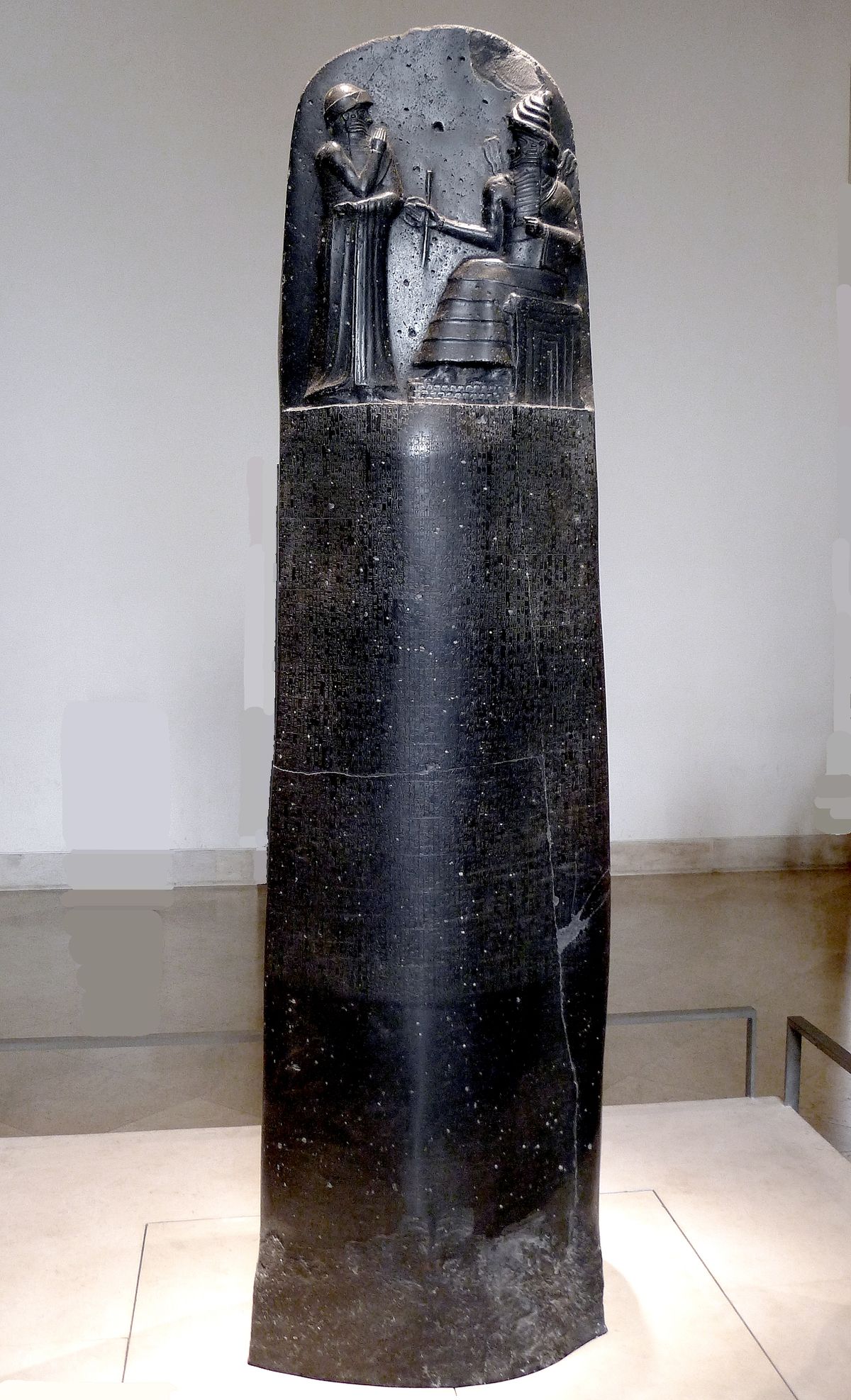
The Code of Hammurabi contains a list of laws and punishments that were used to govern the people of Babylon. Some of the laws include regulations on trade, marriage, and property ownership. The punishments for breaking these laws varied depending on the severity of the offense. Some punishments included fines, beatings, and even death. The images associated with the laws and punishments in the code provide insight into the justice system of the ancient Babylonian civilization.
Images of Society and Culture

The Code of Hammurabi also provides insight into the society and culture of ancient Babylon. The code contains laws that regulate the behavior of individuals in society, including regulations on marriage, inheritance, and slavery. The images associated with these laws reveal the role of women and slaves in Babylonian society, as well as the importance placed on family and inheritance.
Conclusion
The images associated with the Code of Hammurabi provide valuable insight into the ancient Babylonian civilization. The images of Hammurabi, the stele, and the laws and punishments reveal the power dynamics and justice system of the society. The images of society and culture reveal the role of women and slaves in Babylonian society, as well as the importance placed on family and inheritance. Overall, the Code of Hammurabi and its associated images provide a fascinating glimpse into the world of ancient Babylon.